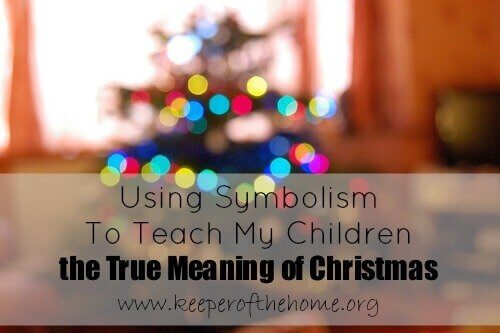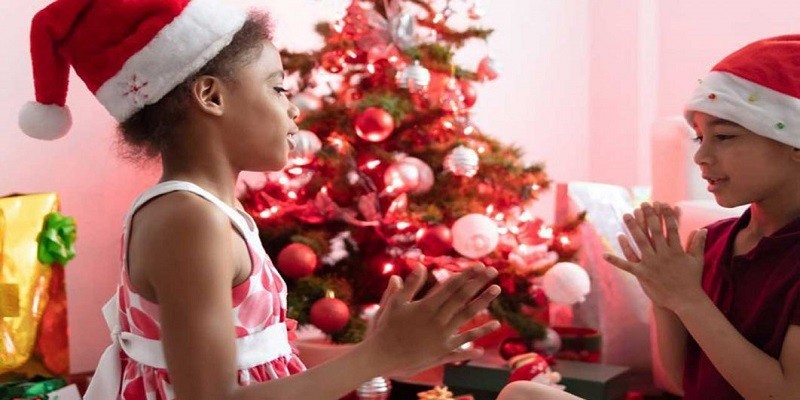Christmas is a holiday to celebrate the birth of Jesus Christ, a time of giving and love. The meaning of Christmas is all about the birth of Jesus Christ and the spirit of giving and love that surrounds this holiday.
It is a time when family and friends come together to celebrate and exchange gifts as a symbol of their love and appreciation for one another. Christmas also reminds us of the importance of kindness, compassion, and spreading joy to those around us.
It is a time to reflect on the true meaning of love and the message of peace that Jesus brought to the world. By explaining this to a child, we can help them understand the significance of Christmas beyond just receiving presents and help them appreciate the value of love, giving, and togetherness during this festive season.
The Significance Of Christmas
Christmas holds a significant meaning for children. Understanding and explaining this meaning in simple terms can be done through stories of love, giving, and the birth of Jesus, fostering excitement and understanding of this joyful holiday.
The holiday season is a magical time, especially for children. They light up at the sight of twinkling lights, beautifully decorated trees, and the anticipation of gifts. But amidst the excitement, it is important to explain to children the true meaning of Christmas and why we celebrate it. In this section, we will delve into the historical origin of Christmas, the symbols associated with this festive season, and the importance of celebrating Christmas.
Historical Origin Of Christmas
To truly understand the significance of Christmas, it is essential to explore its historical origin. Christmas is a Christian holiday that commemorates the birth of Jesus Christ. It is believed that Jesus was born on December 25th, although the exact date remains uncertain. The holiday traces its roots back to the early Christian traditions and has been celebrated for centuries.
During Christmas, we celebrate the birth of Jesus Christ, who is considered the Son of God. He is believed by Christians to be the savior of mankind, spreading love, peace, and joy. The historical origin reminds us of the religious significance behind the holiday and helps children grasp the deeper meaning of Christmas.
Symbols Associated With Christmas
Christmas is filled with symbols that represent various aspects of the celebration. Understanding these symbols can enhance a child’s appreciation for the holiday. Let’s take a closer look at some of the most significant symbols associated with Christmas.
- Christmas Tree: The Christmas tree is a centerpiece of holiday decorations. It symbolizes life and renewal. Families come together to decorate the tree with lights, ornaments, and tinsel, creating a festive and joyous atmosphere.
- Nativity Scene: The nativity scene depicts the birth of Jesus in a stable with Mary, Joseph, the shepherds, and the three wise men. It reminds us of the humble beginnings of Jesus and the importance of compassion and kindness.
- Santa Claus: Santa Claus is a jolly, gift-giving character loved by children around the world. He represents the spirit of generosity and embodies the joy of giving.
- Candy Canes: Candy canes are an iconic Christmas treat shaped like a cane. They symbolize the shepherd’s crook, reminding us of the shepherds who visited baby Jesus.
These symbols are not just decorations but have deeper meanings associated with the Christmas celebration.
Importance Of Celebrating Christmas
Christmas is not only a time for gift-giving and joyous celebrations but also an opportunity to reflect on important values and traditions. Teaching children about the importance of celebrating Christmas helps them understand the true significance behind the holiday. Here are some reasons why celebrating Christmas is important:
- Family and togetherness: Christmas brings families together, fostering a sense of love, unity, and togetherness. It is a time to strengthen family bonds and create lasting memories.
- Gratitude and generosity: Christmas encourages us to show gratitude for the blessings in our lives and to be generous towards others. It teaches children the importance of giving, sharing, and helping those in need.
- Faith and spirituality: For Christians, Christmas is a deeply sacred time that reinforces faith and spirituality. It provides an opportunity to connect with the religious teachings and values that underpin the holiday.
- Tradition and culture: Celebrating Christmas allows us to honor and preserve traditions that have been passed down from generation to generation. It gives children a sense of belonging and helps them appreciate their cultural heritage.
By explaining the historical origin of Christmas, the symbols associated with the celebration, and the importance of celebrating this special occasion, we can help children understand and embrace the true meaning of Christmas. It is through this understanding that the holiday becomes more than just presents and decorations – it becomes a time of love, joy, and gratitude.

Credit: keeperofthehome.org
Communicating The Message Of Christmas
Explaining the meaning of Christmas to a child can be both a delightful and challenging experience. As children’s understanding of the world expands, it becomes important to introduce them to the traditions and beliefs that shape this festive season. Communicating the message of Christmas is an opportunity to teach them about kindness, love, and the religious significance of the holiday. In this section, we will explore effective ways to simplify the concept of Christmas for a child, explain the birth of Jesus, and discuss the Christian belief in His importance.
Simplifying The Concept Of Christmas For A Child
When introducing the concept of Christmas to a child, it’s crucial to simplify the information and make it relatable to their developmental stage. Here are a few ways to achieve this:
- Start by explaining that Christmas is a special time of year when people come together to celebrate and show kindness to one another.
- Focus on the joyous traditions associated with Christmas, such as decorating a tree, giving and receiving gifts, and spending time with loved ones.
- Help them understand that Christmas is a time to be thankful for what they have and learn the importance of giving to those in need.
Explaining The Birth Of Jesus
The birth of Jesus is a central theme of Christmas for many Christians. Here are some tips for explaining this concept to a child:
- Start by sharing the story of Mary and Joseph’s journey to Bethlehem, highlighting the fact that they couldn’t find a place to stay.
- Explain that Jesus was born in a stable and placed in a manger because there was no room in the inn.
- Emphasize the beauty of Jesus’ birth, as it symbolizes hope and new beginnings for people around the world.
- Encourage the child to ask questions and engage in a dialogue about the story to deepen their understanding.
Discussing The Christian Belief In The Birth Of Jesus
For children who belong to Christian families, it’s important to discuss the religious significance of Christmas. Here’s how to approach this topic:
- Share that Christmas holds a special meaning for Christians because it commemorates the birth of Jesus, whom they believe is the son of God.
- Explain that Jesus is considered a messenger of love, compassion, and forgiveness.
- Discuss the importance of Jesus’ teachings, such as the Golden Rule to treat others as you want to be treated.
- Reassure them that Christmas can be meaningful for everyone, regardless of their religious beliefs, as it encourages acts of kindness and a spirit of generosity.
Engaging In Christmas Traditions
The magic of Christmas lies not only in the joy of receiving gifts but also in the meaningful traditions and activities that bring families together. Engaging in Christmas traditions is a wonderful way to teach children the true meaning of Christmas, while also creating lasting memories. By participating in activities related to Christmas, creating meaningful traditions, and incorporating the spirit of giving and love, you can help your child understand the significance of this festive season.
Participating In Activities Related To Christmas
When it comes to engaging in Christmas traditions with your child, it is important to involve them in festive activities. By participating in these activities, they can truly absorb the magic of Christmas. Here are a few ideas to get you started:
- Decorating the Christmas tree together: Allow your child to help hang ornaments or even create their own handmade decorations. This will not only make them feel included but also foster their creativity.
- Baking Christmas treats: Spend an afternoon with your little one in the kitchen, baking delicious cookies or cakes. Teach them the importance of sharing these treats with others, whether it be a neighbor, friend, or family member.
- Attending Christmas concerts or performances: Take your child to local holiday concerts or performances. This will expose them to the joy of music and storytelling and help them appreciate the talent and effort put into creating such performances.
Creating Meaningful Traditions
Creating traditions is a beautiful way to make Christmas more meaningful for your child. These traditions will hold a special place in their hearts and will be passed down through generations. Consider incorporating some of these ideas into your family’s Christmas traditions:
- Reading Christmas stories: Gather around the fireplace or cozy up in bed, and read classic Christmas stories together. This will not only ignite their imagination but also teach them about the values of love, kindness, and goodwill.
- Visiting a local charity: Take your child to a local charity or volunteer together during the holiday season. By helping those in need, they will understand the importance of giving and the true spirit of Christmas.
- Creating a gratitude jar: Encourage your child to write down things that they are grateful for throughout the year and place these notes in a jar. On Christmas Day, open the jar and reflect on the blessings received, fostering an attitude of gratitude and appreciation.
Incorporating The Spirit Of Giving And Love
Christmas is a time of giving and showing love to others. By incorporating these values into your family’s traditions, you can instill in your child the importance of generosity and compassion. Here are a few ways to do this:
- Participating in a toy drive: Delve into the holiday spirit by allowing your child to pick out a toy for a child in need. Explain the significance of selflessness and the joy of giving.
- Making homemade gifts: Help your child create personalized and heartfelt gifts for their loved ones. This will not only encourage their creativity but also emphasize the thought and effort put into giving.
- Writing and delivering Christmas cards: Teach your child the joy of connecting with others by writing and delivering Christmas cards to family members, friends, and even neighbors. This act of kindness will bring a smile to the recipients’ faces.
Engaging in Christmas traditions is a wonderful way to impart the true meaning of Christmas to your child. By participating in activities related to Christmas, creating meaningful traditions, and incorporating the spirit of giving and love, you can help them understand the significance of this special time of year. So, let the traditions begin and create memories that will be cherished for a lifetime!
Frequently Asked Questions Of How To Explain The Meaning Of Christmas To A Child?
What Is The True Meaning Of Christmas?
The true meaning of Christmas is the celebration of the birth of Jesus Christ, who Christians believe is the Son of God.
Why Do We Celebrate Christmas?
We celebrate Christmas to commemorate the birth of Jesus Christ and to spread love, joy, and kindness among family and friends.
How Can I Explain Christmas To A Child?
You can explain Christmas to a child by telling them that it is a special time when we show love and gratitude to others, and celebrate the birth of Jesus.
What Traditions Are Associated With Christmas?
Traditions associated with Christmas include decorating a Christmas tree, exchanging gifts, singing carols, and spending time with loved ones.
Why Do We Give Gifts On Christmas?
We give gifts on Christmas to symbolize the gifts that the wise men brought to baby Jesus and to show our love and appreciation for others.
What Are Some Popular Christmas Symbols?
Popular Christmas symbols include the Christmas tree, Santa Claus, reindeer, stockings, and the nativity scene.
Conclusion
To conclude, explaining the meaning of Christmas to a child can be a joyous and valuable experience. By focusing on the core themes of love, kindness, and giving, we can teach children the importance of empathy and gratitude. Engaging in age-appropriate activities, storytelling, and incorporating traditions can further enhance their understanding of this special holiday.
Remember, the key is to make the explanation simple, relatable, and exciting, allowing them to embrace the true spirit of Christmas.







